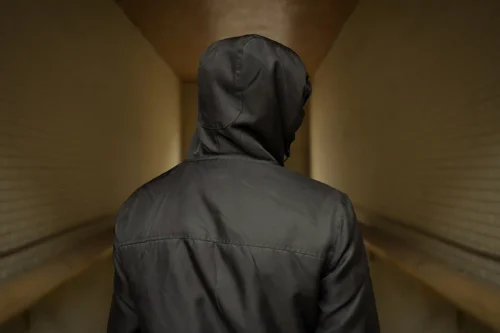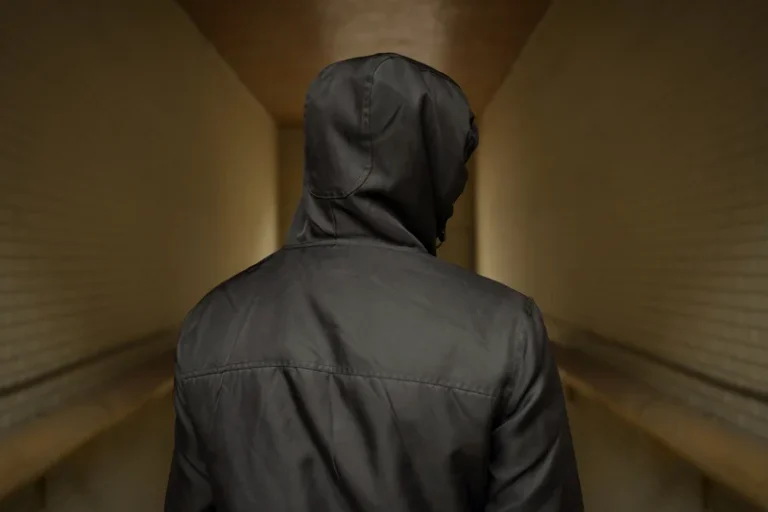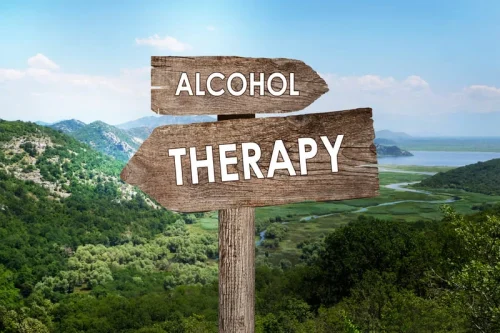The peyote Mescaline cactus is recognized as one of the most prominent sources of Mescalin. Mescalina’s structure is based on the alkaloid compound derived from the peyote cactus and has been utilized in sacred rituals by various native populations for hundreds of years. Currently, Mescalina is obtainable in diverse forms, including synthetic variations frequently marketed under the pretense of alternative compounds. The possession, cultivation, and use of San Pedro cactus or mescalin-containing substances may be subject to legal restrictions in many countries.
Mescaline Overdose: No Reported Fatalities
There have also been sporadic reports of members of the Native American Church using peyote to prevent alcohol abuse 50. A couple of clinical trials suggested that LSD has the potential to help with alcoholism, but large-scale data are lacking 49. To do so, they recruited 27 people who worked in jobs that require creative problem-solving ability (e.g. engineers, physicists, and furniture designers). The researchers gave them 200 mg mescaline sulfate and then told them to work on problems related to their field that required a creative solution. The participants also took tests to measure their creativity both before and during the mescaline session 46. We highly advise against the use of mescaline until future studies determine its safety and efficacy in medically-supervised and safe settings.
- Research will focus on how various psychedelics can be used under proper supervision and guidance to treat severe depression, anxiety and PTSD.
- The legality of mescaline varies depending on the country or jurisdiction.
- In 2012, Norwegian researchers Teri Krebs and Pal-Orjan Johansen published a meta-analysis in the Journal of Psychopharmacology indicating there was good evidence from the 1960s and 1970s for the effectiveness of the hallucinogen LSD in treating alcoholism.
- It’s always wise to consult with legal professionals or relevant authorities to ensure compliance with the law.
- However, no clinical trials examined mescaline’s effects on alcohol addiction.
- The search was on to reveal the compound(s) responsible for peyote’s psychedelic effects 1.
Mental health risks
Learn more about this hallucinogen and the Effects of Mescaline Abuse and Addiction. However, mescaline also caused schizophrenic patients to become highly sexual, verbalizing sexual desires and past experiences. The 5-HT2A receptor is thought to play a key role in the development of schizophrenia and psychosis. By activating this receptor, mescaline can produce temporary changes in the brain that mimics those seen in psychotic episodes caused by schizophrenia 58, 59, 60, 23, 24.
Similar to LSD and psilocybin, Mescaline offers intense hallucination effects. The drug is taken orally or intravenously, known as TMPEA or Peyote cactus. The primary mechanism by which mescaline causes hallucinogenic effects is activating 5HT-2A serotonin receptors.
It is crucial to seek professional help if you or someone you know exhibits these symptoms, as they may indicate a problem with Mescalina abuse. Treatment for Mescaline addiction often involves a combination of therapy, counseling, and support programs. Treatment aims to address the root causes of addiction, provide coping mechanisms, and help individuals maintain long-term sobriety.
In modern times, self-experimenters around the world are reporting a much wider range of benefits, including personal insights, mood enhancement, increased empathy and creativity, lifestyle changes, and even lucid dreams. Mescaline is a substituted phenethylamine, a molecule based on the basic phenethylamine structure. Along with MDMA, 2C-B, and others, this sets it apart from the tryptamine class of psychedelics, which includes psilocybin, LSD, and DMT. Pure mescaline is usually available as a white or brownish crystalline powder, either loose or packed into capsules as a pill. However, compared to other psychedelics, mescaline extraction tends to be rare in most parts of the world. Do you have more questions about mescaline and its effects now that you know what it is?
How do people take it?
That’s why it’s essential to seek help from a qualified addiction treatment professional who can help create a personalized recovery plan. A fundamental dissimilarity between Mescaline and LSD pertains to the length of their respective effects. It is widely acknowledged in the medical community that Mescalina has a more prolonged onset and duration than LSD, with its effects persisting for 12 hours or more. In contrast, LSD exhibits a briefer onset and time, with its effects typically subsiding within 6-8 hours.
Although natural extract Mescalina peyote cactus has been utilized in customary religious rituals for centuries, synthetic Mescaline has also emerged as a viable option, frequently advertised as a “legal high” or a replacement for other illegal substances. Mescalina is a potent hallucinogen that can elicit various effects on the psyche and physiology. The what is mesclun drug structure of Mescalin resembles that of serotonin, a neurotransmitter with significant involvement in regulating mood, appetite, and sleep.
What are the effects from mescaline?
Mescaline is prepared from the peyote cactus by extraction and purification, but it can be synthesized. Finally, although we have compared mescaline experiences by mescaline type of use inthe present study, we do not intend for these data to be interpreted to mean thatfurther rigorous, clinical research are not needed. We cannot conclude thatsimilarities or differences observed in this dataset may have also been caused by avariety of additional factors, such as participant demographics, “set and setting”(i.e. contextual variables) that might co-vary with the type of use. Therefore, thepresent observations should be replicated in controlled clinical trials to allow anystrong conclusion. Effective oral dosage of synthetic mescaline is in the 200–400 mg range, with threeorders of magnitude greater than the equivalent dose of lysergic acid diethylamide(LSD) (Beyerstein, 2003;Nichols, 2004). Oralingestion of mescaline appears to have a longer half-life compared to other classicpsychedelics (i.e. 6 h), with peak effects occurring approximately 2 h afteringestion and a total duration lasting 8–12 h (Dasgupta, 2019; Nichols, 2004).
Tyrosine and phenylalanine serve as metabolic precursors towards the synthesis of mescaline. Tyrosine can either undergo a decarboxylation via tyrosine decarboxylase to generate tyramine and subsequently undergo an oxidation at carbon 3 by a monophenol hydroxylase or first be hydroxylated by tyrosine hydroxylase to form L-DOPA and decarboxylated by DOPA decarboxylase. These create dopamine, which then experiences methylation by a catechol-O-methyltransferase (COMT) by an S-adenosyl methionine (SAM)-dependent mechanism.
Theoretically, this means higher doses are needed for a psychoactive effect. Likely because of this, mescaline is used less frequently than other psychedelic hallucinogens like psilocybin and LSD 1, 69, 29. In the 1950s, British psychiatrist Humphry Osmond began studying mescaline and LSD’s ability to address mental illnesses, including alcohol addiction. He was somewhat successful, however, his work was cut short by the drug backlash in the 1960s 13. Indigenous peoples of South America have reportedly used mescaline-containing cacti such as the San Pedro (Echinopsis pachanoi) and Peruvian torch (Echinopsis peruviana) in folk medicine and religious ceremonies for thousands of years 7, 8, 1. It is an alkaloid in the phenethylamine class of compounds, which includes other hallucinogens as well as various stimulants, decongestants, and antidepressants.
What are the risks of taking mescaline?
Depending on a person’s height, weight, mental state, previous drug use, mescaline can last between 10 and 20 hours. Though it’s not as prevalent today, mescaline was the first psychedelic to enter mainstream Western culture—before the widespread use of LSD and psilocybin. More recently, the extracted compound has shown promise in the medical and psychotherapeutic treatment of substance abuse and depression, among other conditions. The most significant mescaline trip of the 1960s, with hindsight, was that taken by the chemist Alexander Shulgin, which he later wrote ‘unquestionably confirmed the entire direction of my life’. He was struck by how little work had been done on compounds with similar structures, and he began to synthesize new ones, including 3,4 methylenedioxymethampetamine, or MDMA, which entered the underground drug market as ‘ecstasy’. MDMA was, in many respects, mescaline tamed for the new chemical generation.
Mescaline Vs Psilocybin & Mescaline Dosage
Research suggests that higher doses can cause “ego dissolution,” a complete loss of the sense of self and the boundaries between self and the rest of the world 12, 32. Besides serotonin receptors, mescaline also activates dopamine receptors in areas of the brain responsible for processing sounds and emotions. This may contribute to the drug’s effect of distorted hearing and enhanced emotions 22. However, mescaline in the form of peyote is legal for religious use by members of the Native American Church (NAC). NAC is a religion that combines Native American beliefs and practices with Christianity and ritualistic peyote use 16, 17.
Anecdotal Internet reports from the US describe the mescaline use for recreational,spiritual, and therapeutic purposes (Erowid, 2011). NA participants in Peyoteceremonies commonly experienced reductions in chronic anxiety, heightened communitysatisfaction, and increased sense of personal worth (Wallace, 1959). Within the NAC, Peyote hasbeen used to treat chronic alcoholism within ethnically oriented residentialtreatment programs (Albaugh andAnderson, 1974). In Western communities, it has been suggested thatmescaline may play a role in the treatment of obsessive compulsive disorder (OCD)and personality disorders (Delgado and Moreno, 1998; Hartogsohn, 2017). Anonymous Internetposts by recreational users describe mescaline as a means of attaining spiritualtransformation, gratitude, compassion, and interconnectedness with the universe(Erowid, 2011, 2012). Although previousresearch suggests beneficial effects of mescaline, it is currently not approved as amedicine by any health authority, and the benefit/risk ratio of mescaline ispresently unknown due to lack of rigorous clinical research.
Typically, mescaline users experience visual hallucinations (both open and closed eye) and radically altered states of consciousness. These are usually found pleasurable and illuminating, but they can be accompanied by feelings of anxiety or revulsion. Other negative side effects can include racing heart beat, dizziness, diarrhoea and headache. Mescaline containing cacti can cause intense nausea and vomiting, which was particularly valued by traditional Native American users because it was considered cleansing. Mescaline is not thought to be physically addictive, and there have been no verifiable deaths from its use.
The buttons are usually dried and people eat them or soaked them in water to drink 50, 10. Some scientists think that serotonin receptor-activators may have the potential to treat alcohol and cocaine dependence. Although rare, HPPD is hard to treat and can lead to lifelong disability due to mental health disturbances. Anecdotally, mescaline is said to often produce a dreamlike state of profound wonder.










